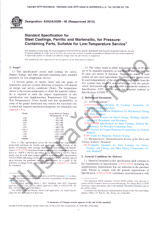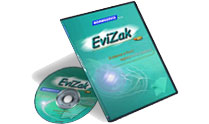Potřebujeme váš souhlas k využití jednotlivých dat, aby se vám mimo jiné mohly ukazovat informace týkající se vašich zájmů. Souhlas udělíte kliknutím na tlačítko „OK“.
ASTM E423-71(2019)
Standard Test Method for Normal Spectral Emittance at Elevated Temperatures of Nonconducting Specimens
Přeložit název
NORMA vydána dne 1.10.2019
Informace o normě:
Označení normy: ASTM E423-71(2019)
Datum vydání normy: 1.10.2019
Kód zboží: NS-972974
Počet stran: 9
Přibližná hmotnost: 27 g (0.06 liber)
Země: Americká technická norma
Kategorie: Technické normy ASTM
Kategorie - podobné normy:
Materiály pro letectví a kosmické dopravní prostředky obecně
Anotace textu normy ASTM E423-71(2019) :
Keywords:
emittance, infrared emittance, material radiative property, radiative heat transfer, spacecraft thermal control, spectral normal emittance, thermal radiation ,, ICS Number Code 49.025.01 (Materials for aerospace construction in general)
Doplňující informace
| Significance and Use | ||
|
5.1 The significant features are typified by a discussion of the limitations of the technique. With the description and arrangement given in the following portions of this test method, the instrument will record directly the normal spectral emittance of a specimen. However, the following conditions must be met within acceptable tolerance, or corrections must be made for the specified conditions. 5.1.1 The effective temperatures of the specimen and blackbody must be within 1 K of each other. Practical limitations arise, however, because the temperature uniformities are often not better than a few kelvins. 5.1.2 The optical path length in the two beams must be equal, or, preferably, the instrument should operate in a nonabsorbing atmosphere, in order to eliminate the effects of differential atmospheric absorption in the two beams. Measurements in air are in many cases important, and will not necessarily give the same results as in a vacuum, thus the equality of the optical paths for dual-beam instruments becomes very critical. Note 4: Very careful optical alignment of the
spectrophotometer is required to minimize differences in
absorptance along the two paths of the instrument, and careful
adjustment of the chopper timing to reduce “cross-talk” (the
overlap of the reference and sample signals) as well as precautions
to reduce stray radiation in the spectrophotometer are required to
keep the zero line flat. With the best adjustment, the “100 % line”
will be flat to within 3 %.
5.1.3 Front-surface mirror optics must be used throughout, except for the prism in prism monochromators, and it should be emphasized that equivalent optical elements must be used in the two beams in order to reduce and balance attenuation of the beams by absorption in the optical elements. It is recommended that optical surfaces be free of SiO2 and SiO coatings: MgF5.1.4 The source and field apertures of the two beams must be equal in order to ensure that radiant flux in the two beams compared by the apparatus will pertain to equal areas of the sources and equal solid angles of emission. In some cases it may be desirable to define the solid angle of the source and sample when comparing alternative measurement techniques. 5.1.5 The response of the detector-amplifier system must vary linearly with the incident radiant flux, or must be calibrated for linearity, and corrections made for observed deviations from linearity. |
||
| 1. Scope | ||
|
1.1 This test method describes an accurate technique for measuring the normal spectral emittance of electrically nonconducting materials in the temperature range from 1000 to 1800 K, and at wavelengths from 1 to 35 μm. It is particularly suitable for measuring the normal spectral emittance of materials such as ceramic oxides, which have relatively low thermal conductivity and are translucent to appreciable depths (several millimetres) below the surface, but which become essentially opaque at thicknesses of 10 mm or less. 1.2 This test method requires expensive equipment and rather elaborate precautions, but produces data that are accurate to within a few percent. It is particularly suitable for research laboratories, where the highest precision and accuracy are desired, and is not recommended for routine production or acceptance testing. Because of its high accuracy, this test method may be used as a reference method to be applied to production and acceptance testing in case of dispute. 1.3 This test method requires the use of a specific specimen size and configuration, and a specific heating and viewing technique. The design details of the critical specimen furnace are presented in Ref (1.4 The values stated in SI units are to be regarded as standard. No other units of measurement are included in this standard. 1.5 This standard does not purport to address all of the safety concerns, if any, associated with its use. It is the responsibility of the user of this standard to establish appropriate safety, health, and environmental practices and determine the applicability of regulatory limitations prior to use. 1.6 This international standard was developed in accordance with internationally recognized principles on standardization established in the Decision on Principles for the Development of International Standards, Guides and Recommendations issued by the World Trade Organization Technical Barriers to Trade (TBT) Committee. |
||
| 2. Referenced Documents | ||
|
Doporučujeme:
EviZak - všechny zákony včetně jejich evidence na jednom místě
Poskytování aktuálních informací o legislativních předpisech vyhlášených ve Sbírce zákonů od roku 1945.
Aktualizace 2x v měsíci !
Chcete vědět více informací? Podívejte se na tuto stránku.




 Cookies
Cookies
